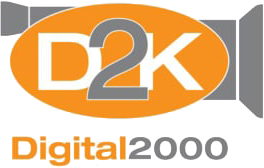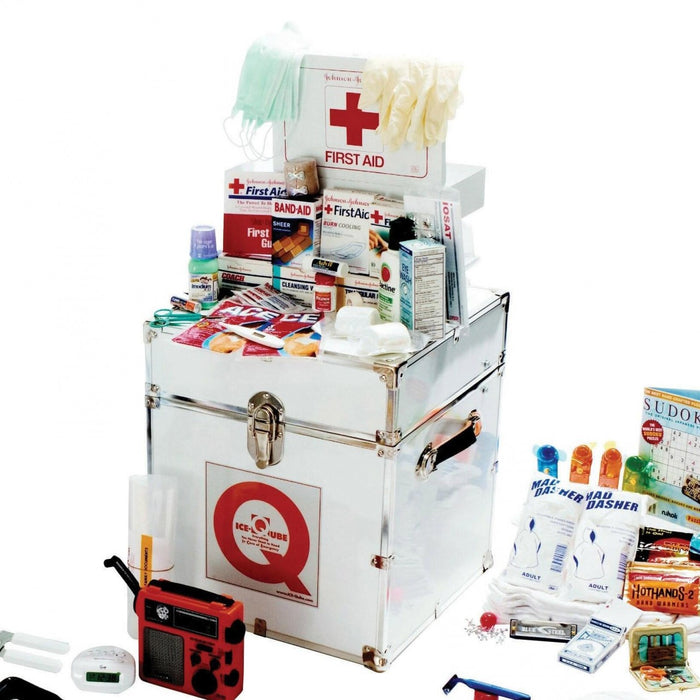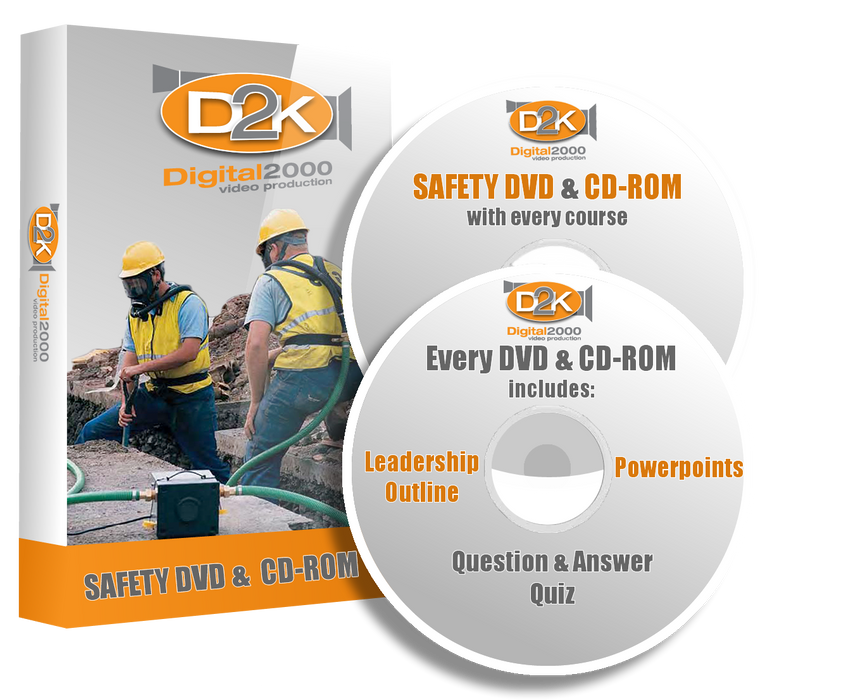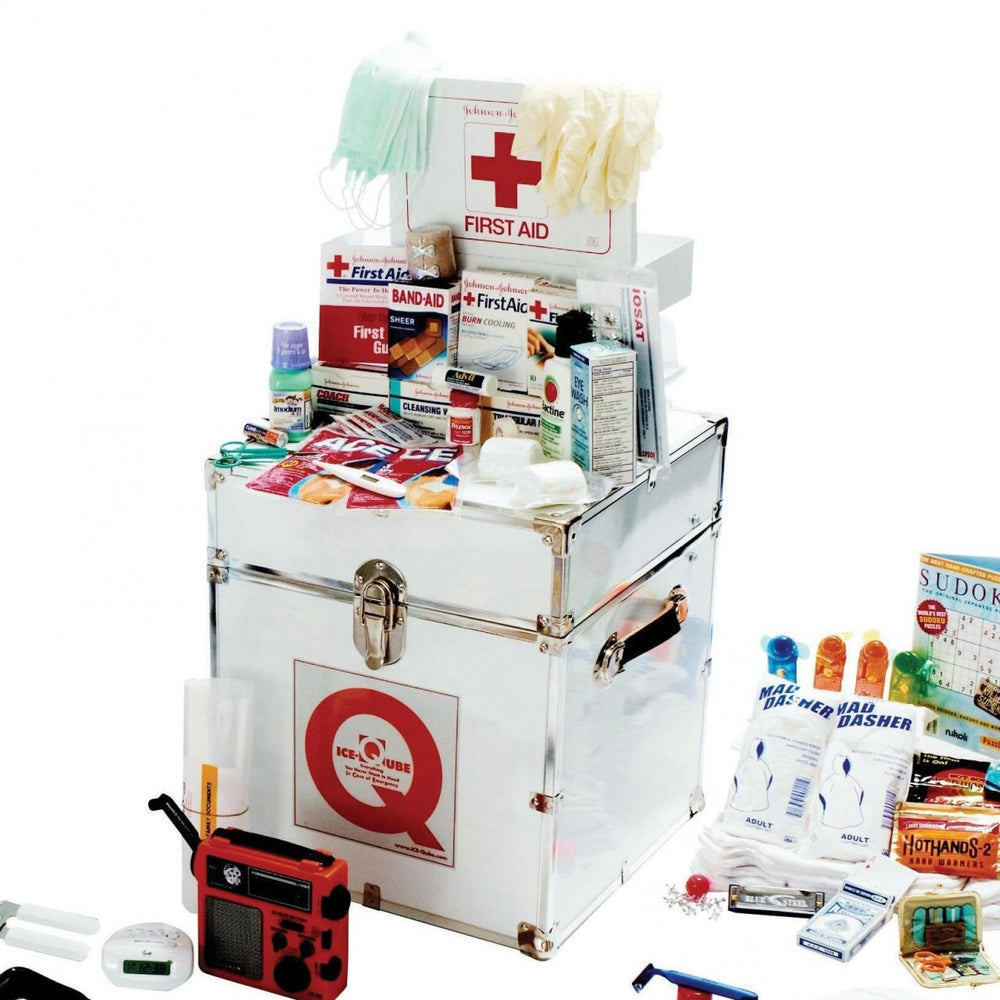Emergency Preparedness Training Package - 8 Videos In One Package
The emergency preparedness training package includes 8 videos and a CD-Rom of written materials.
PACKAGE CONTENTS:
1025i Emergency Preparedness At Work
The Federal Emergency Management Agency (FEMA) has concluded that the Big One will be the worst disaster in the United States since the Civil War. California is not the only earthquake prone area either. An estimated 44 of our 51 states are now considered to be earthquake prone. In fact, most parts of the world produce earthquake activity and it can happen anytime. This program is called Emergency Preparedness in the Workplace and it will save lives and prevent injuries if the steps within the program are followed.
Topics included in this safety video are: safety measures during the earthquake, people are the number one priority, training, Pre-Emergency Drills, exits, fire suppression equipment, Duck, Cover, and Hold, aftershocks, entering or exiting damaged buildings, gas lines, downed power lines, telephones, water supplies, battery operated radios, vehicles, outdoor barbecues, hibachis, and camping stoves, shut off gas, home emergency supplies, isolation, and absence of emergency services.
1032i First Aid
First aid is the immediate care given to the injured or suddenly ill person. It is temporary assistance that is rendered until competent medical care, if required, arrives and takes over. This program has been designed to help provide basic information that will help you properly apply first aid that can save lives, reduce recovery time and can possibly be the difference between temporary disability or lifelong disability for the victim.
Topics included in this safety video are: EMS, Good Samaritan Law, assess, alert, attend, universal precautions, bleeding control, capillary bleeding, venous bleeding, arterial bleeding, shock, burns, musculoskeletal, IACT, head, neck, spine, asthma, diabetes , general care, anaphylactic shock, stroke, seizure, poison, wasps, hornets, yellow jackets, spiders, hypothermia, frostbite, heat related illness, abdominal injury, open chest wound and closed chest wound, dental injuries, and nosebleed.
1036i CPR2000
A clear understanding of the risk factors associated with heart attack and brain attack will help in determining a path to a healthier lifestyle. Risk factors can be divided into two groups, those we have control over and can change, and those over which we have little or no control and cannot change. The first group contains bad habits, diet, exercise level, stress levels, and such. The second group relates to factors present from before we were born, genetics, and gestational problems.
Topics included in this safety video are: major risk factors (smoking, high blood cholesterol, high blood pressure, and physical inactivity), high blood cholesterol and high blood pressure are also major risk factors for a brain attack (stroke), contributing risk factors (obesity, nausea, dizziness, sweating, tingling, or numbness felt in the arm or fingers usually on the left side, extreme discomfort or pain in the chest area that lasts without relief), instance of stroke (there may be movement, speech, sight, or thinking problems), CPR (Cardio Pulmonary Resuscitation), 3 basic techniques for performing CPR (Infant CPR - babies under 1 year old, Child CPR - between the ages of 1 year to 8 years old, and Adult CPR - 8 years of age and older), saving lives, ABC (Airway, Breathing, Circulation), how to perform CPR, assessment, position the victim, complications of CPR, infants, children, and AED.Bombing and the threat of being bombed are harsh realities in today's world. The public is becoming more aware of those incidents of violence and the potential for destruction and physical harm. Law enforcement is charged with the responsibility of protecting life and property, but law enforcement alone will not do the job. It's up to each and everyone to do their part. Training and awareness will go a long way toward making your homes and workplaces safer and more secure environments.
Topics included in this safety video are: bombs, bomb threats, a physical security plan and a bomb incident plan, three alternatives for bomb threat response, Duck-Cover-Hold.
5016A Emergency Evacuation
Concern and commitment for the safety and health of all employees is a high priority. Throughout the world, there are disasters of many types such as hurricanes, floods, bombs, toxic chemical releases, radioactive releases, fires, tornados, earthquakes, and other disasters. One of the most important considerations in surviving any type of disaster is preparing for the emergency.
Topics included in this safety video are: emergency exits, fire extinguishers, PASS, evacuate the building, elevators, closed doors, smoke, smoke inhalation, alarm systems, evacuation assembly area, zones, duck-cover-hold, proper medical facilities, and transportation.
18001A Incident Command System
ICS has become the standard for all emergencies. This program discusses the basic structure and function of the Incident Command System which can be used for any size incident. The Incident Command System is required to be used for most emergency situations in order to be eligible for fund reimbursement by FEMA.
18004A Emergency Incident Response
Designed for all employees involved in a major incident or emergency. Examines an electrocution scenario with two victims explaining what happened, why and how the incident could have been prevented.
18006A Disaster Workers Code of Safe Practices
This is a great orientation training program for paid and volunteer fire and other emergency response personnel. Addresses important safety procedures, personal protective equipment and other safety guidelines and tips.
CD90106 CD-ROM Written Materials



